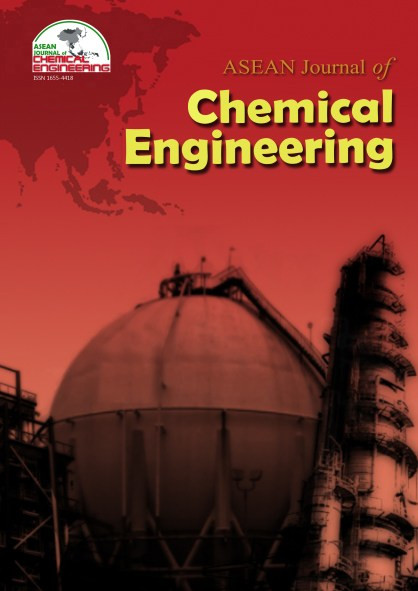Influence of Oxygenation on Granulation in Anaerobic Wastewater Treatment
Abstract
The emphasis of this study was to put on the ability of bacteria to form granules in anaerobic wastewater treatment. This direction was taken mostly because the success of wastewater treatment in such systems as Upflow Anaerobic Sludge Blanket (UASB) depends on how long the biomass is retained, and this is a function of adhesion of bacteria to reach other to form well-settling granular sludge. The granular sludge will remain in the reactor and will be exposed to the continuous supply of nutrients (wastewater) which is injected into it. The wastewater used in this study was synthetic. It consisted of molasses dissolved in water (100%), and a mixture of molasses and peptone dissolved in water (20 % and 80 %, respectively). Several factors or parameters influence bacteria to form good granules and improve the performance of the digesters. The effects of oxygen on the anaerobes, and the extent to which it acts as an inhibitor or toxic was studied. This was found to be both advantageous and disadvantageous.References
2. Herbert, H.P., Zhu Jinfu, and Liu Guohua, (1989), Anaerobic Treatment of Brewery Effluent, Biotechnology letters, 2, 673-678.
3. Holland, K.T., Knap, J.S., and Shoesmith, J.G., (1987), Anaerobic Bacteria, Chapman and Hall, New York, 206.
4. Matson, J.T. and Characklis, W.G., (1976), Diffusion into Microbial Aggregates Water Research, 10, 877-885.
5. Morgan, J.W., Evison, L.M., and Forster, C.F., (1991), The Impact of Anaerobic Extracellular Polymer on The Metabolism of Granular Anaerobic Sludge, Environmental Technology, 12, 421-430.
6. Passeri, A., Schmidt, M., Haffner, T., Wray, V., Lang, S., and Wagner, F., (1992), Marine Biosurfactants IV: Production, Characterization, and Biosynthesis of an Anionic Glucose Lipid from The Marine Bacterial Strain MMI. Appl. Microbiol. Biotechnol., 37, 281-286.
7. Ross, W.R., (1991), Anaerobic Digestion of Industrial Effluent with Emphasis on Solid-Liquid Separation and Biomass Retention, Ph.D Thesis, University of Orange Free State, Bioemfotein, South Africa.
8. Van Wambeke, M., Grusenmeyer, S., Verstraete, W., and Longry, R., (1990), Sludge Bed Growth in An UASB Reactor Treating Potato Processing Wastewater, Process Biochemistry International, 25, 1728-1734.
9. Verstraete, W., van Vaerenbergh, E., Bruyneel, B., Poel, J., and Top, E., (1992), Biotechnology Process in Environmental Technology Part II (Course notes).
10. Visser, F.A., van Lier, J.B., Macario, J.L., and de Macario, E.C., (1991), Diversity and Population Dynamics of Methanogenic Bacteria in A Granular Consortium, Applied and Environmental Microbiology, 57, 1728-1734.
Copyright holder for articles is ASEAN Journal of Chemical Engineering. Articles published in ASEAN J. Chem. Eng. are distributed under a Creative Commons Attribution-NonCommercial 4.0 International (CC BY-NC 4.0) license.
Authors agree to transfer all copyright rights in and to the above work to the ASEAN Journal of Chemical Engineering Editorial Board so that the Editorial Board shall have the right to publish the work for non-profit use in any media or form. In return, authors retain: (1) all proprietary rights other than copyright; (2) re-use of all or part of the above paper in their other work; (3) right to reproduce or authorize others to reproduce the above paper for authors’ personal use or for company use if the source and the journal copyright notice is indicated, and if the reproduction is not made for the purpose of sale.



